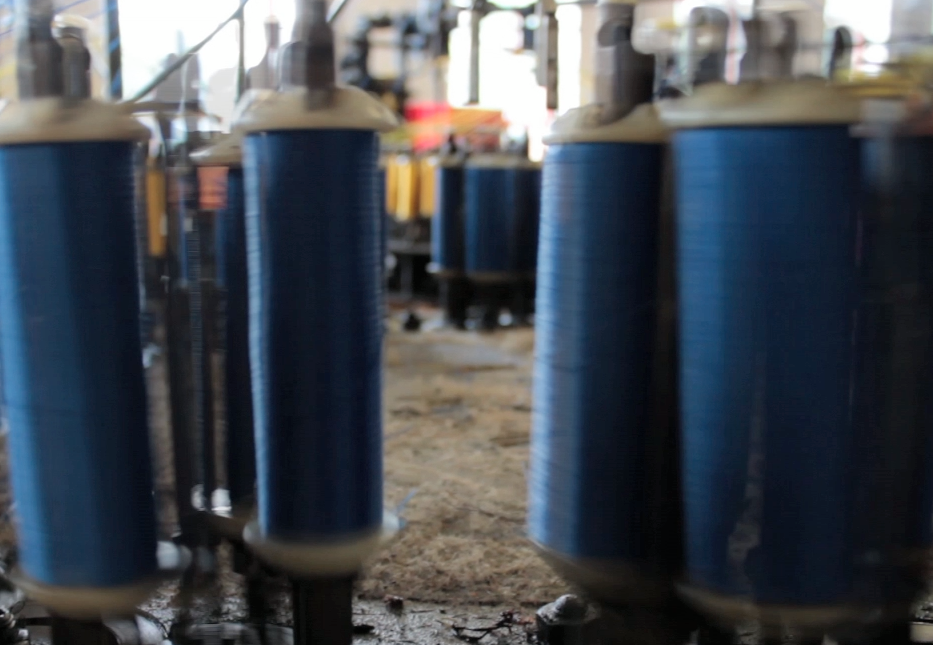If you’ve walked past the entrances to the Samek or the Downtown Gallery during the evening recently, you may have noticed a new video playing. It is artist, photographer, and documentary filmmaker Lynn Estomin’s 2014 video work, Fashion to Die For. You can watch the trailer here.
Estomin’s video begins with hypnotic footage of industrial factory knitting machines. Bright, monochromatic spools of thread dance across the screen, accompanied by a minimalist score from violinist and composer Ritsu Katsumata. However, this rhythmic, formal, almost abstract composition does not last long. Partway though the brief, five minute video, the images blur and the camera refocuses on a new scene, this time of garment workers–mostly women–in a Bangladeshi factory. The score becomes more dissonant and electronic. It is clear that Estomin has more on her mind than a formal examination of the rhythm and color of a garment factory.
Next, the video cuts to footage from the 2013 factory collapse in Dhaka, Bangladesh where 1,129 workers were killed and 2,515 were injured. This is followed by a clip from artist Yolanda Domínguez’s street art response to the collapse, in which fashion bloggers dressed in couture lie covered in rubble on the streets of Madrid in the city’s commercial fashion district. The cut serves as a reminder of the culpability of the global fashion economy, which permits the shoddy conditions in these factories in underdeveloped countries. Finally, the video slowly pans on a still image of a hand holding a photograph of a woman, presumably a loved-one lost in the accident. Lists of casualties from other garment factory disasters roll over the still image and the video fades to credits.
Though Madrid and Dhaka may seem to be remote places where events may not have impact on us here in Central Pennsylvania, there is a very real local connection. Estomin is based in Williamsport, PA, teaching photography and digital art at Lycoming College. In a related multimedia project, A Stitch in Time, she chronicles a partial history of garment workers in Pennsylvania during the 19th and 20th centuries, focusing on factories in Williamsport including the Stearns Silk Mill and Weldon’s Pajamas, which you may know in its current iteration as a local art-space, appropriately called the Pajama Factory. The garment industry has mostly disappeared in Williamsport in the past decade or so, owing to the search for cheaper labor and more lax labor laws. Thus, we might consider Fashion to Die For a follow up to A Stitch in Time, as these industries have found conditions more suitable to exploitation in places like Bangladesh.
We’re showing this video now specifically in connection to our current exhibition, Esther Traugot: Arboretum. Though Estomin and Traugot present two very different perspectives on textiles, we ask you to consider how these two distinct works of art are in fact related.



